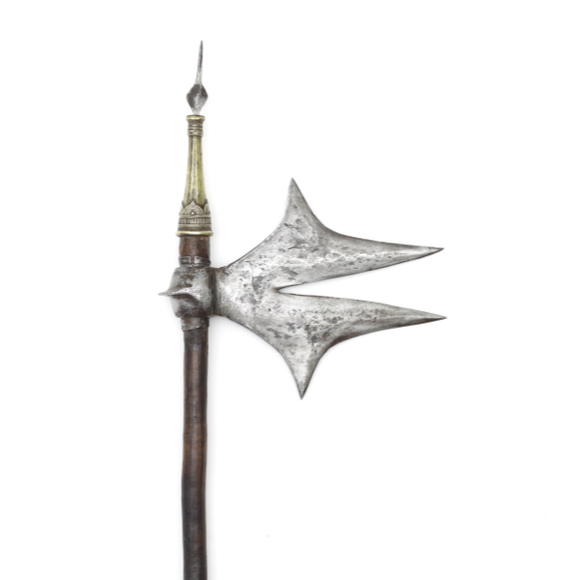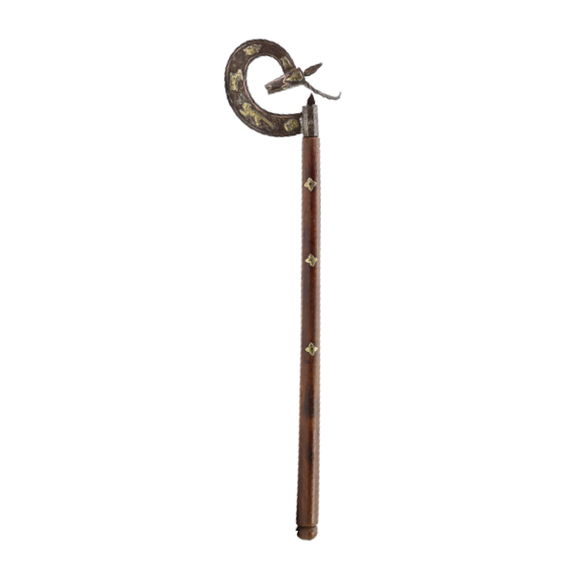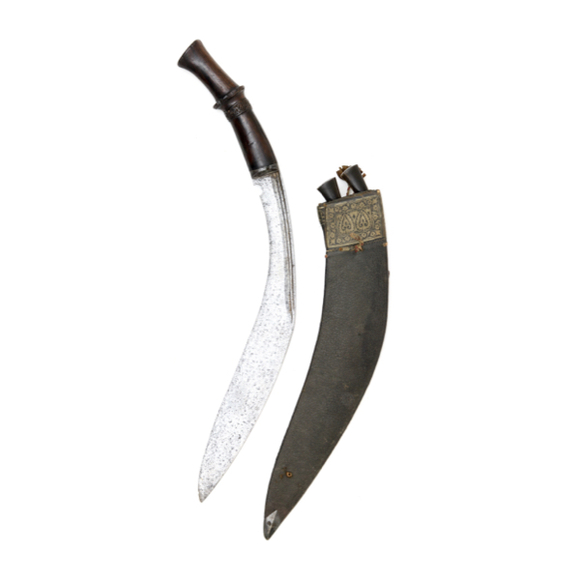Very rare subtype of a Khond tribal axe with double points.

Axe width 26.2 cm
Height 16.5 cm
Thickness near socket 6 mm
Socket diameter 16 mm
Iron / steel
Central or South India
17th century
Introduction
In the late 17th century Anup Singh emerged as a powerful leader in north India. He was able to consolidate his rule in the northwestern part of the Mughal empire, a part long troubled by conflict. As a reward, Mughal emperor Aurangzeb appointed him as ruler of Bikanēr in 1669.1
Anup Singh continued to serve extensively in the Deccan as a military commander, general and administrator. He lead the campaign at Salher in 1672 and Bijapur in 1675. He was the administrator of Aurangabad between 1677–1678 and rose to the elevated rank of Maharaja ("great king"), in 1679.
He returned to the Deccan to lead the siege of Golconda in 1687 and the battle of Adoni in 1689. Following the victory over Adoni, Anup Singh was appointed as governor of Adoni by the emperor, which he remained from 1689 to his death in 1698.2Among the booty captured during these campaigns were lots of artwork and manuscripts, which Anup Singh had shipped to his palace in Bikanēr.3 There was also a substantial amount of arms and armor captured that made it into the Bikanēr armory. Some of these pieces were inscribed with dates and places of capture, and often mention Anup Singh's name. One of the more famous of such pieces is a shirt of mail and plate in the Metropolitan Museum of Art, thought to have come from Bijapur.4
Notes
1. Hermann Goetz; The Art and Architecture of Bikaner State, Published for The Government of Bikaner State and The Royal India and Pakistan Society by Bruno Cassirer, Oxford, 1950. Pages 46-47.
2. David G. Alexander, Stuart W. Pyhrr, Will Kwiatkowski; Islamic Arms and Armor in the Metropolitan Museum of Art, Yale University Press, New Haven and London, 2015. Page 46.
3. Navina Najat Haidar and Marika Sardar; Sultans of Deccan India, 1500-1700, Opulence and Fantasy, Yale University Press, New Haven and London, 2015. Page 287.
4. Alexander, Pyhrr, Kwiatkowski; Islamic Arms and Armor in the Metropolitan Museum of Art Pages 46-47.
This example
Presented in this article is a tribal axe that is generally considered to be used by the Khond people of central, eastern and southern India. Such axes turn up in literature as pharetri (Egerton) or bullova (Stone).1
It is of overall recurved shape with chiseled details at the axe-socket junction, now worn due to age. There is a finial at the back of the socket, which is not too common on these.
Inscription
The axe bears a chiseled marking on one side in Devanagari script that can be transliterated as:
બિ माहाराजा ी अनपू सहं जी
Bi Māhārājā śrī Anūp Siṃh jī
अ र ष १७४७
a ra ṣa 1747
The first line starts with the "Bi" that is seen on almost all pieces from the Bikaner armory. It is Gujarati script and probably shorthand for "Bikanēr". What follows is the name and title of Maharaja Anup Singh.
The meaning of the beginning of the second line is not clear, what follows if a number that makes sense if we interpret it as samvat 1747, corresponding to 1690. Like the Metropolitan Museum's shirt, the inscribed date is after his last known battle so it probably represents the date the piece was incorporated into the Bikanēr armory.
Most pieces from the Bikanēr armory are simply inscribed with Bi (બિ) followed by a number in a dot punch style. We don't know why some inscriptions carry Anup Singh's full name and title, perhaps they were pieces that belonged to him personally.
But if so, one wonders why a simple tribal axe such as this one made it to his personal collection. A fond memory? We might never know.
Comparable examples
A pharetri of somewhat similar form was presented to King Edward VII, when Prince of Wales, during his tour of India in 1875-76. See Royal Collection Trust accession number: RCIN 37658
A comparable inscription is found on the Metropolitan Museum's mail and plate shirt. Metropolitan Museum accession number 2000.497.
It was inscribed with the name of Maharaja Anup Singh and the date samvat 1774 (approx. 1691 A.D.) This is perhaps the date on which it was added to the armory because no campaign corresponds to that exact year.
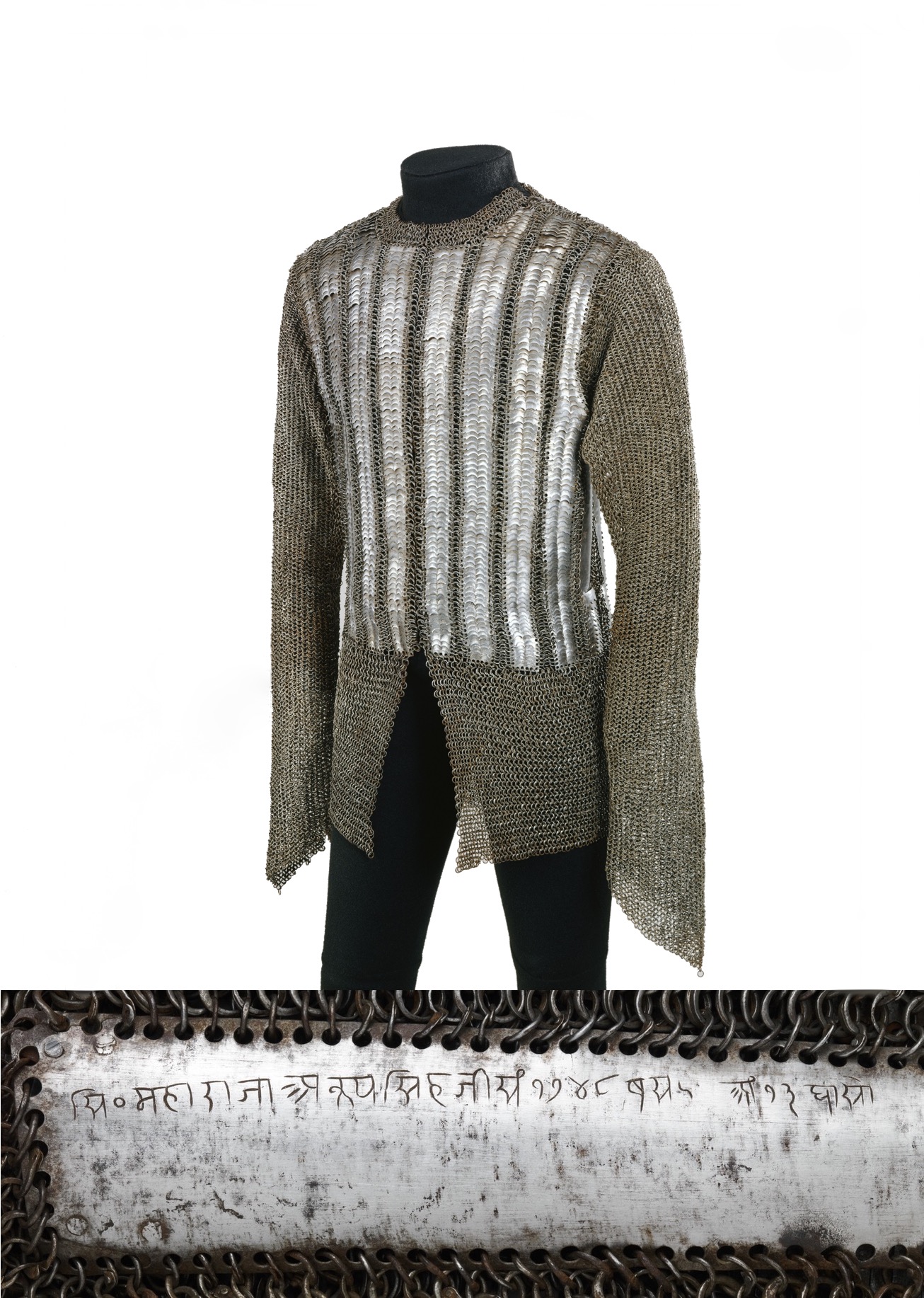
The shirt is believed to have been captured during the sieges of either Golconda or Adoni.
Metropolitan Museum accession number 2000.497.
Conclusion
A central Indian tribal axe with markings suggesting it was part of the loot taken by Anup Singh during his southern campaigns. The inscribed date puts it in the late 17th century, which is very early for a tribal item.
Notes
1. For pharetri see: Lord Egerton of Tatton; Indian and Oriental Arms and Armour. Dover Publications; Revised edition, 2002. Page 78. For bullova, see: Stone, George C.; A Glossary of the Construction, Decoration and Use of Arms and Armor: in All Countries and in All Times. (Reprint) Jack Brussel, New York, 1961. Page 155.

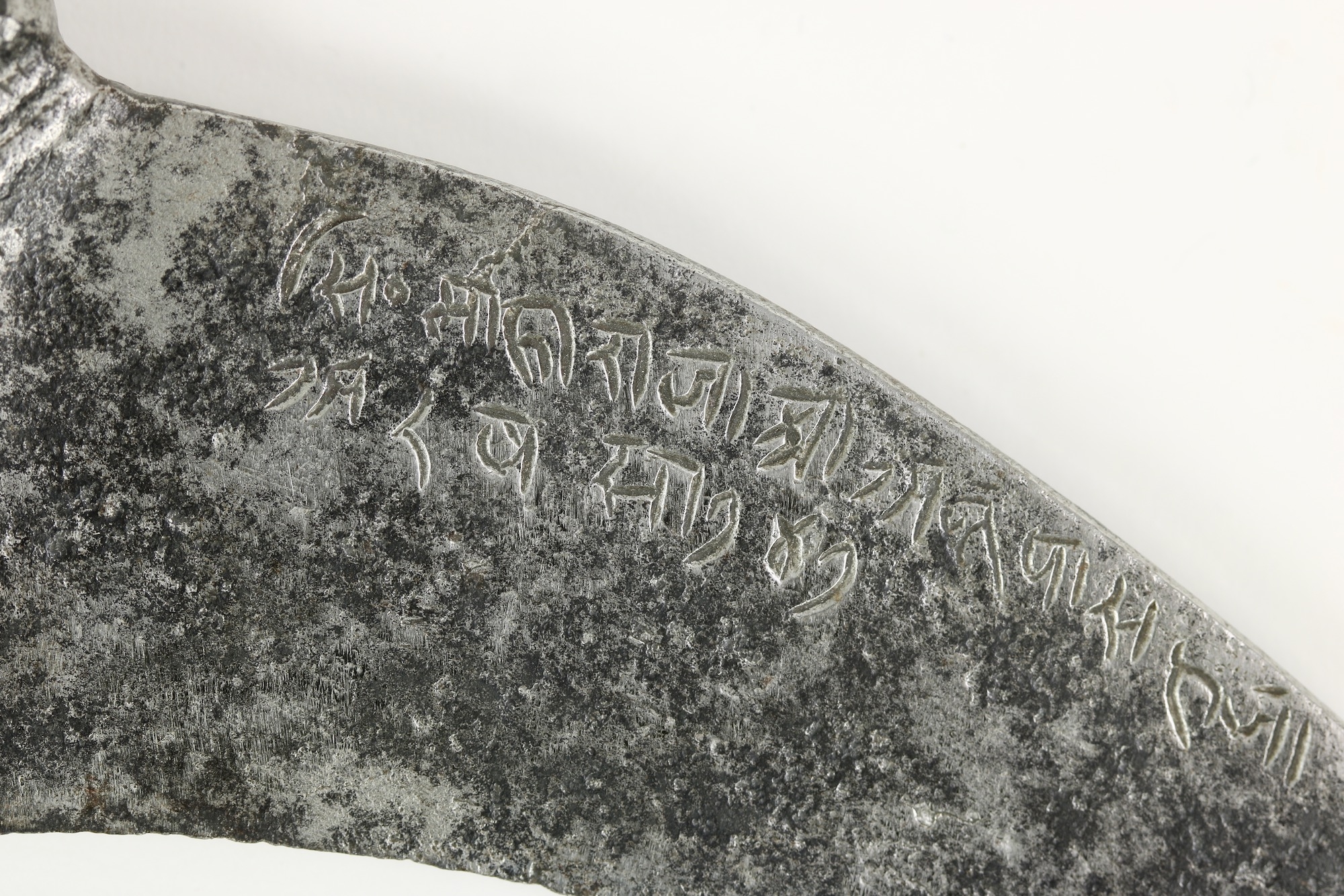




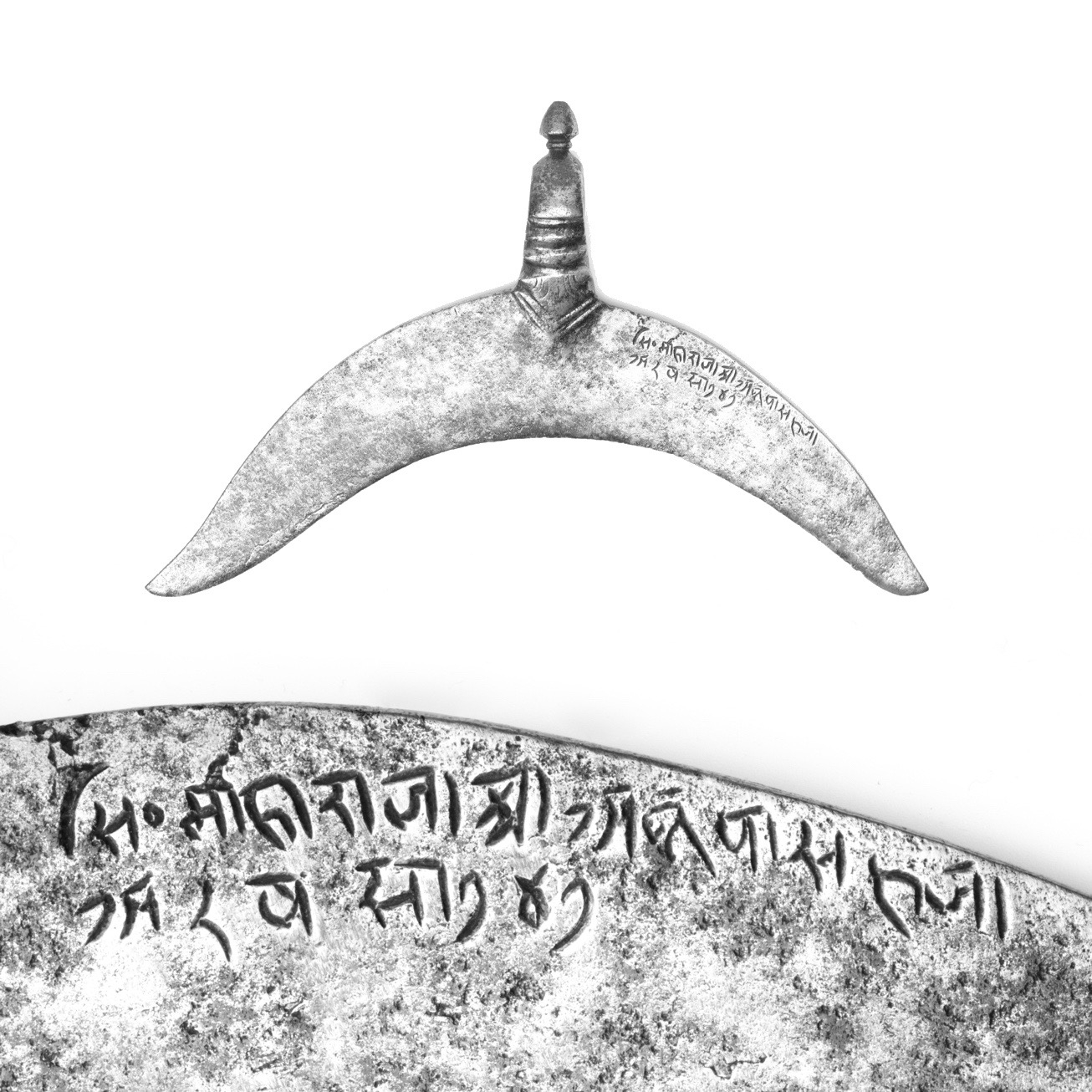
With a very fine Nepalese blade, but kard-like hilt and scabbard.
Early type with very shallow notch in the blade and little flare in the pommel.

